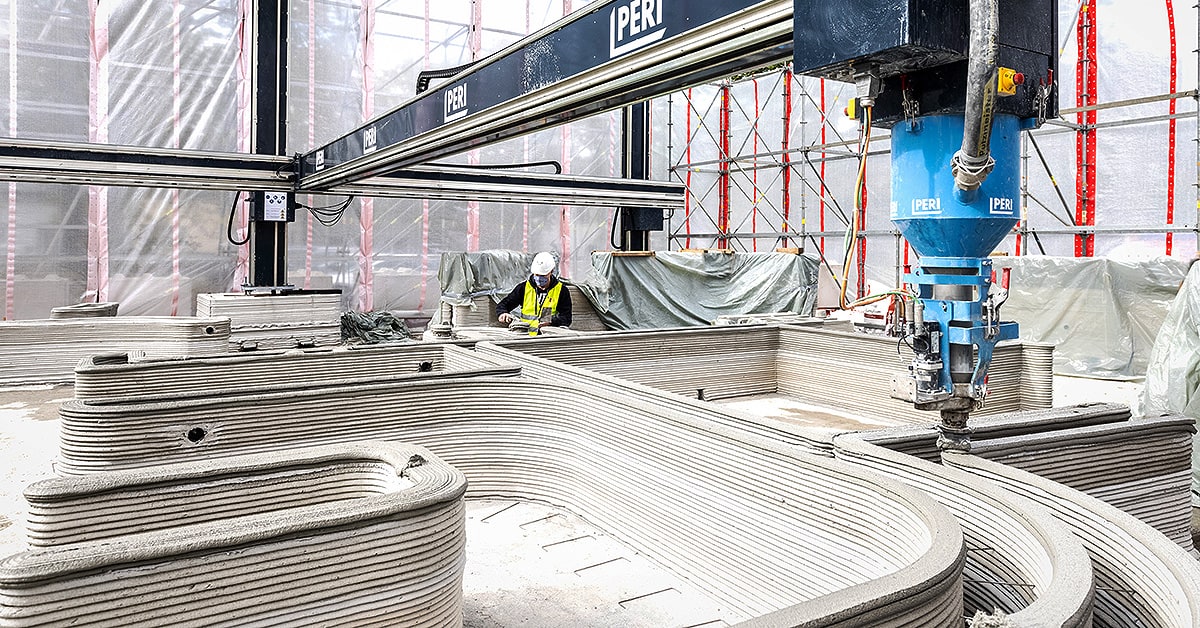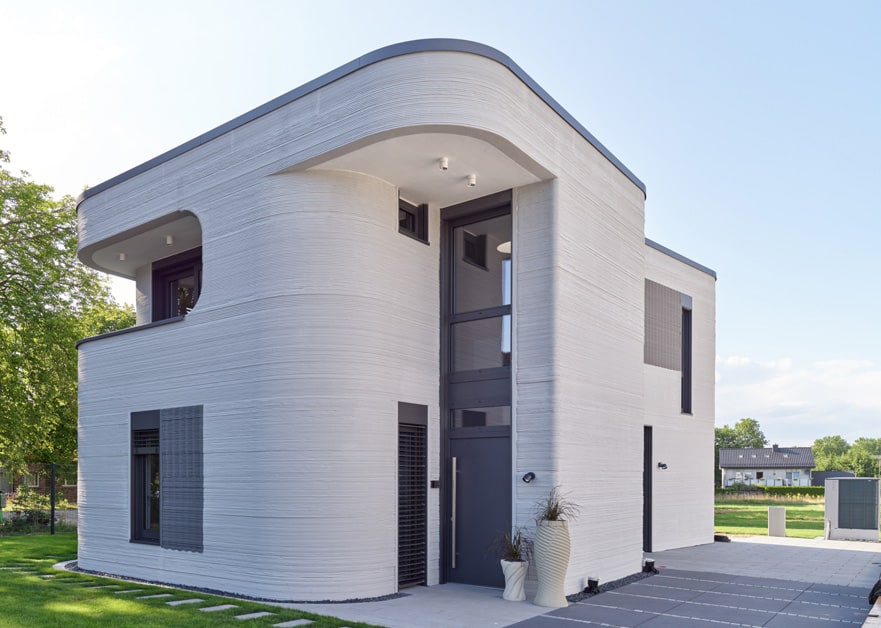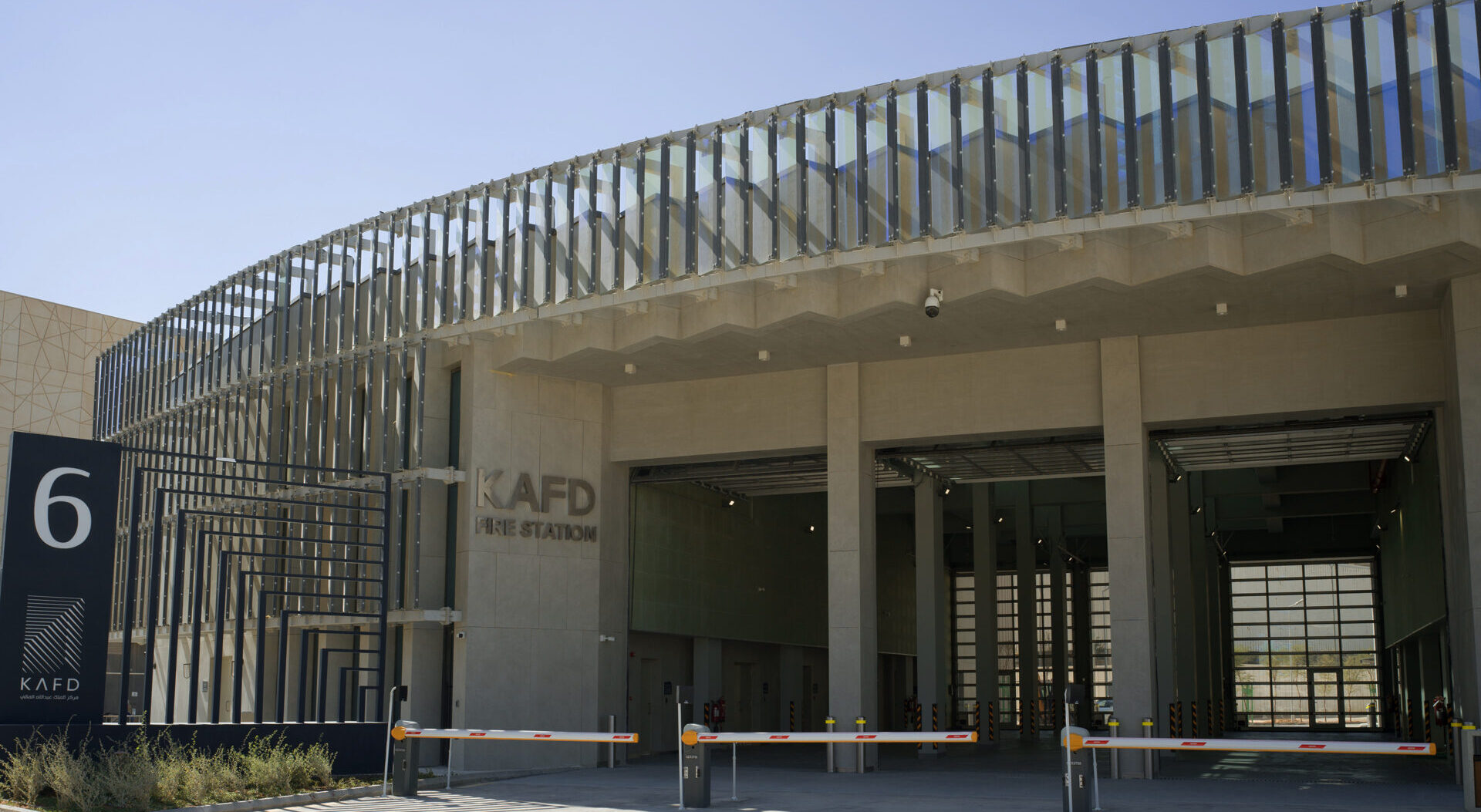 Peri builds a 3D printed residential building in Germany. Photo © Peri
Peri builds a 3D printed residential building in Germany. Photo © Peri .
As 3D printing begins to disrupt the construction industry, the Middle East could become a global leader in pioneering new technology and applying the latest innovations to building fabrication and construction.
Additive manufacturing, known as 3D printing, is transforming many industries. 3D printers now appear everywhere, from the medical sector to the tech and aerospace industries. In the past few years, 3D printing has also begun to disrupt the construction industry. Formerly used for producing small-scale architectural models, 3D printing has been successfully employed to manufacture full-scale buildings. Though still not seen as competitive with traditional construction techniques, 3D-printing machines typically add layer upon layer of concrete, creating an entire structure in weeks instead of months. Successful experiments have also included 3D-printed custom formwork for concrete buildings, and 3D-printed buildings made of local earth.
The Middle East is already a hotbed of innovation in robotic construction, with Dubai leading the way and other countries like the KSA investing heavily in innovation. Early experiments indicate that robotic fabrication can lower the costs of labor and reduce construction waste. With continued investment, experimentation, and development, robotic construction could become an important part of architecture and construction in the KSA and across the Middle East.
3D-Printed Structures in Dubai
Back in 2016, Dubai announced an official 3D Printing Strategy for future building construction and inaugurated a 250-square-meter 3D-printed office space. In 2019, Dubai opened a considerably larger, curvaceous, two-story 3D printed building, this one 9.5 meters tall and 640 square meters in area. Aiming to be a world leader in robotic construction, Dubai launched a 3D Printing Strategic Alliance in 2020.
In 2021, Dubai took a step toward formalizing the 3D printed construction industry by implementing a framework for regulation. According to new legislation, companies wishing to use 3D printing technologies for construction in Dubai must register with the municipal government and obtain a license. This suggests an expectation for further growth and development in robotic construction.
The Future of 3D Printing in KSA
KSA is similarly investing in its construction industry and making strides on many fronts, including automation technologies. As early as 2018, the Saudi Ministry of Housing commissioned a company called CyBe Construction to design and construct an affordable, 3D-printed, 80-square-meter house in the desert. The robotically constructed house was fully completed in five weeks, including all systems and fittings (windows, doors, electrical sockets, etc); the 27 walls and 21 parapets were printed in only one week. This prototype was meant to encourage new and efficient buildings techniques in the Kingdom.
One of the KSA’s largest real estate developers, Dar al Arkan, announced in 2021 that it was adding concrete 3D printing technology to its building operations. The firm is working with the Denmark-based firm Construction of Building on Demand (COBOD) to 3D-print homes up to three stories tall, starting at the Shams Ar Riyadh development. The potential benefits of this technology include accelerating the speed of construction, improving safety, and reducing waste. According to Manufactur3D Magazine, COBOD’s gantry printing structure “takes two days to set up, only one day to dismantle, and is capable of printing up to one meter of concrete in just one second making it ideal to build residential communities in record time.”
In KSA, construction innovations are typically showcased at the The Big 5 Saudi industry conference, held in Riyadh on 38–31 March 2022. Now in its 10th year, The Big 5 Saudi brings together manufacturers and stakeholders to showcase new products and best practices across the construction industry. Advances in robotic construction are sure to be explored as industry players discuss the future of construction in KSA.
3D Printing Concrete Formwork and Earth Materials
Another approach to robotic construction involves 3D printing of concrete formwork rather than the concrete structure itself. Twente AM, a Dutch start-up focused on architectural 3D printing, has engineered a large-scale 3D printer “to create leave-in-place formwork for the construction of concrete homes,” according to its president and cofounder. The technology was demonstrated at the company’s research and development center in Nelson, Canada, before being shown on screens at the 40th annual Big 5 International Building & Construction Show in Dubai. Twente’s machine is described as a 9-axis 3D printer with a reach of 391 square meters. Although the company plans to operate in North America initially, the technology could also be useful for construction in the Middle East.
Peri builds a 3D printed residential building in Germany. Photos © Peri
3D printed architecture is not limited to concrete. One of the most intriguing and green alternative materials? Local soil. In 2021, an Italian architecture firm, Mario Cucinella Architects, successfully 3D-printed a series of 60-square-meter domed buildings using earth from the construction site. After analyzing the local soil, they removed stones and gravel with a sieve. The soil was mixed with water and discarded rice husks in a concrete mixer, to form a cheap and strong building material. Amazingly, this method formed thick, solid walls that provide a high degree of insulation, just as in traditional adobe or earth construction.
TECLA Technology and Clay 3D Printed House. Design by Mario Cucinella Architects. Photo © Iago Corazza, Mario Cucinella Architects.
The need for continued innovation
While 3D printing still needs further research and testing to become commercially viable at a large scale, the technology is advanced rapidly and appears on the verge of becoming useful, including in the Middle East. With continued innovation, robotic construction could help building owners, developers, and architects meet their goals more efficiently and safely, while reducing construction labor costs and carbon emissions. The Middle East, already a global leader in construction, could see a profusion of 3D printed buildings in the years ahead.
Omrania, a renowned architecture firm, has established a reputation for excellence in blending aesthetic and functional design, setting a benchmark for architecture firms in Riyadh, Saudi Arabia.















































